This easy Eggless vanilla cake recipe makes a perfectly moist and flavorful sponge every time. It’s delicious to enjoy with a homemade strawberry glaze, or use as a base for many cream cakes and gateau. Here you’ll find my step-by-step instructions, video with photos, plus expert tips for making a no-fail vanilla cake for your next celebration.
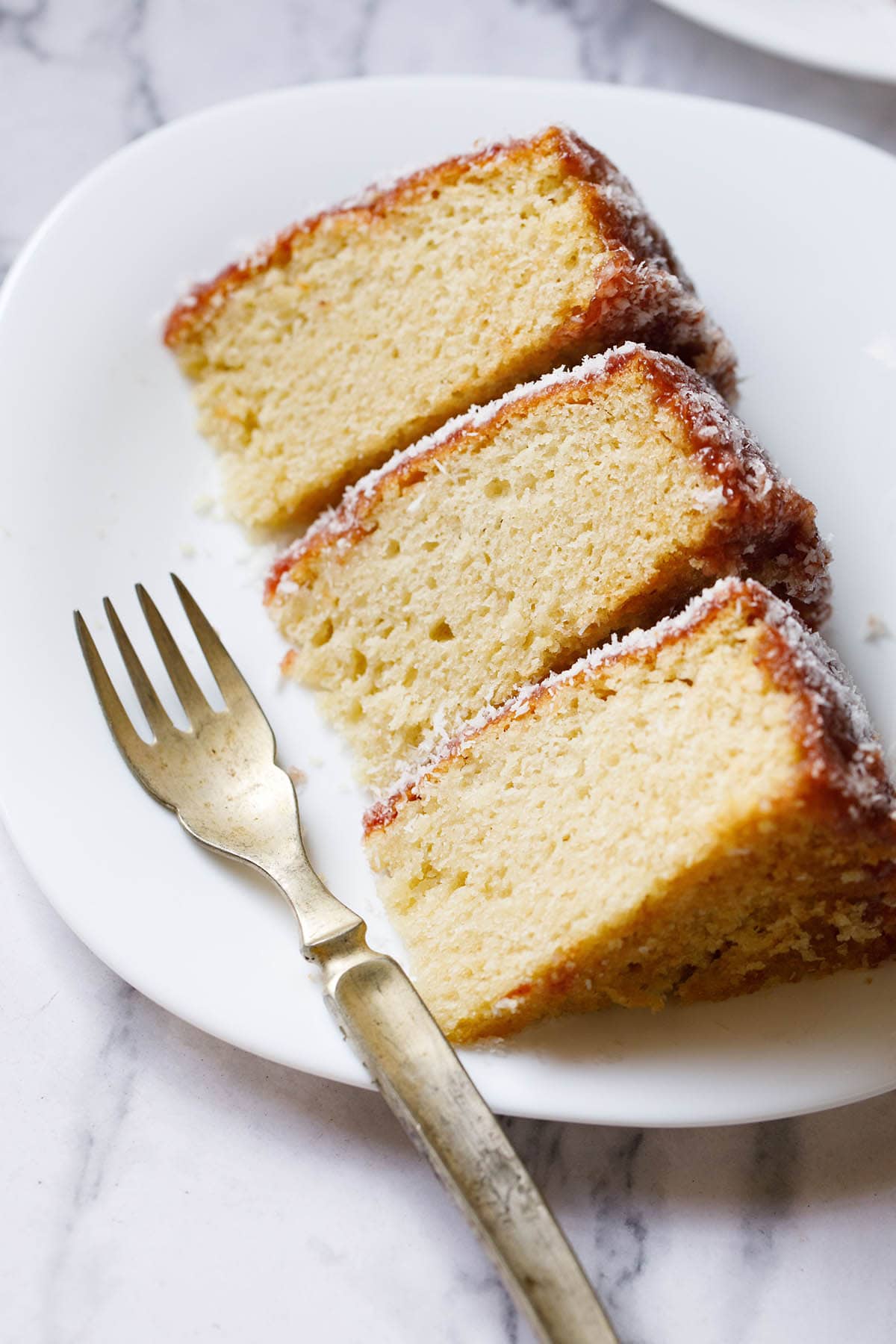
About Eggless Vanilla Cake Recipe
Vanilla cake is a classic cake that most people love. While there are many ways this cake can be made, my recipe is egg-free and gives a soft and moist crumb.
Most of the times when I make Eggless Cakes, I use the mixture of vinegar + baking soda. The reaction of vinegar with baking soda releases carbon dioxide and this aerates the batter which helps in leavening the cake.
This vanilla cake made without eggs uses the same reaction principle. It is a perfect no-fail recipe that works every time. Along with vinegar and baking soda, I also use yogurt and melted butter to make the cake fluffy and tender.
Table of Contents
Yogurt gives a lovely soft crumb to the eggless vanilla cake, and butter makes each bite terrifically rich. I use this cake as a base to make various frosted cakes like Strawberry Cake and Eggless Pineapple Cake. But you can enjoy it as a simple tea cake.
I have also shared an easy recipe for homemade strawberry jam glaze in this post. In a word, the sweet strawberry glaze makes the cake awesome. It is always a hit whenever I serve this vanilla cake for dessert or at gatherings!
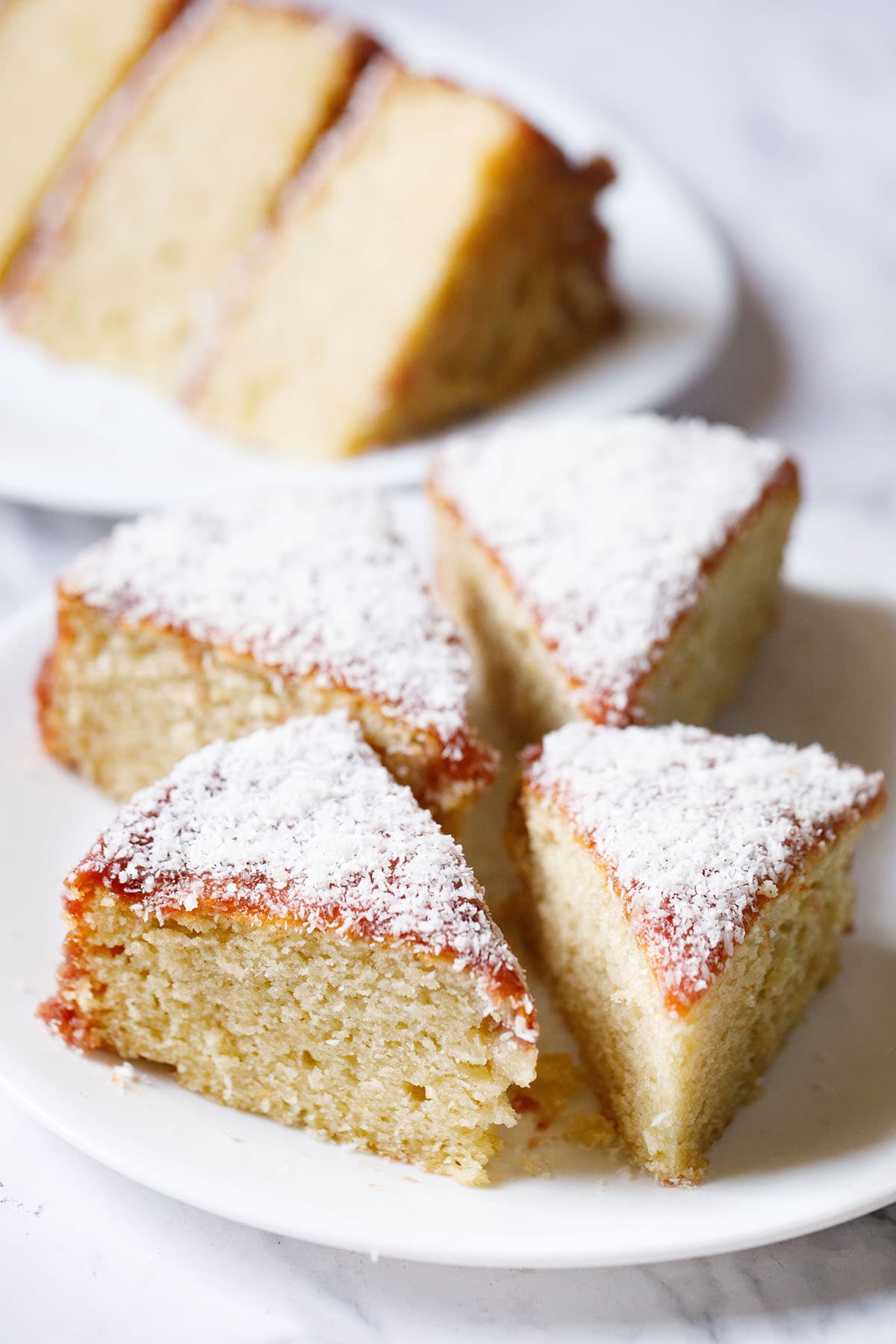
How to make Eggless Vanilla Cake
Preparation
Before you make the eggless vanilla cake recipe, get all your ingredients ready.
Make sure all of them are at room temperature, except the butter that can be cold or straightaway removed from the refrigerator.
1. First add 1.5 cups of all purpose flour with 1 tsp of baking powder and a pinch of salt into a sieve placed over a mixing bowl.
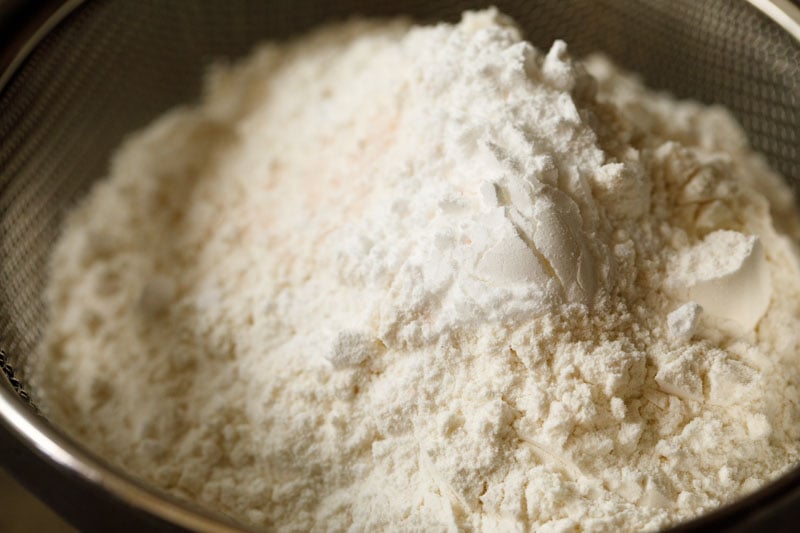
2. Sift the dry ingredients once or twice. Set aside.
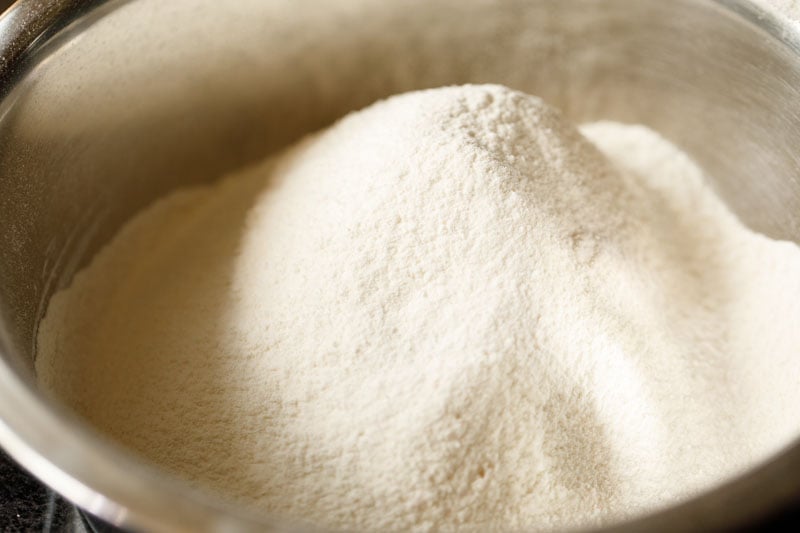
3. Grease a 7.5 or 8 inches round pan with some butter. You can line the pan with parchment if you prefer.
One of my ancient (but really sturdy and well-seasoned) baking pan in the photo below.
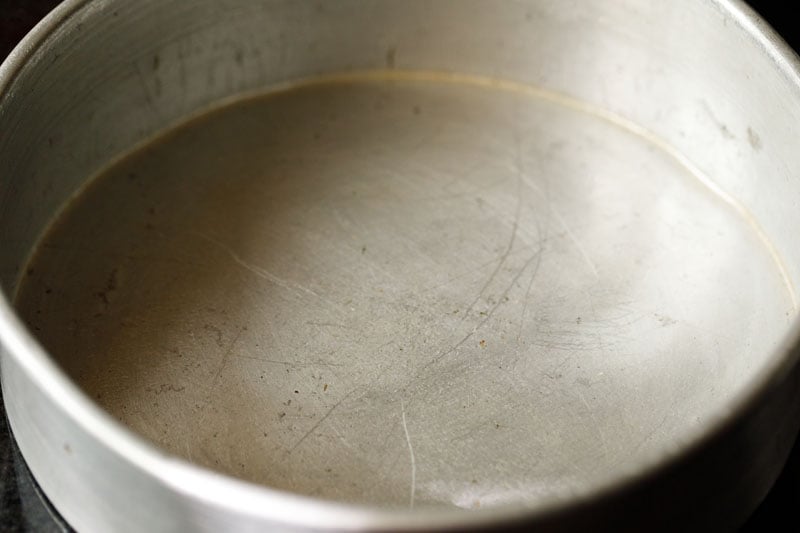
4. Heat slightly more than ½ cup of butter in a small pan or bowl on medium-low heat until it just melts.
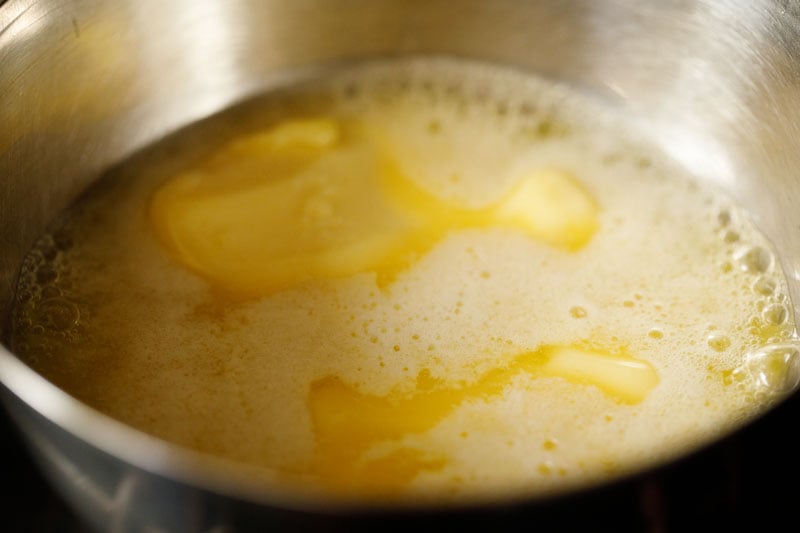
5. Measure the melted butter in a ½ cup measuring cup. Set aside. Preheat your oven to 190 degrees Celsius (375 degrees Fahrenheit) for 15 to 20 minutes before baking.
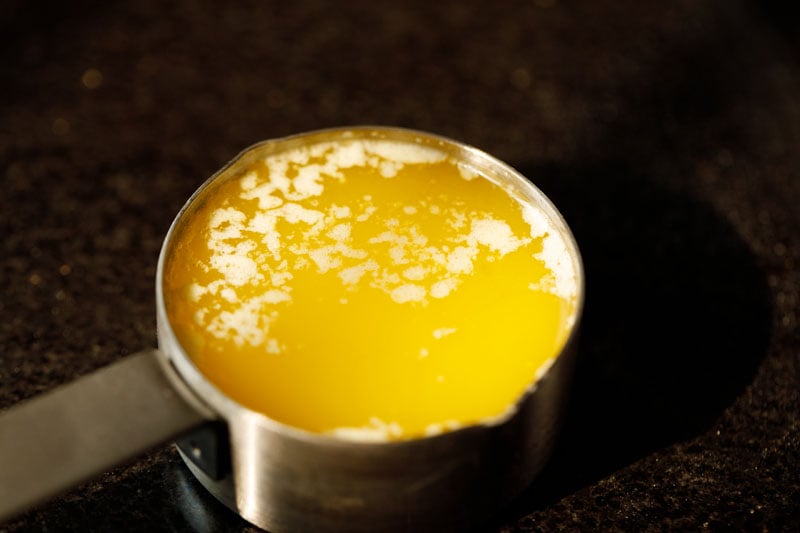
6. In another bowl add ¾ cup of raw sugar (or white sugar), 1 teaspoon of vanilla extract, ¼ cup of curd (yogurt) and 1 tablespoon of apple cider vinegar.
Note: Beat the curd separately in a bowl and then add. Also use fresh curd and not sour curd.
Tip: Swap with white vinegar or lemon juice if you do not have apple cider vinegar.
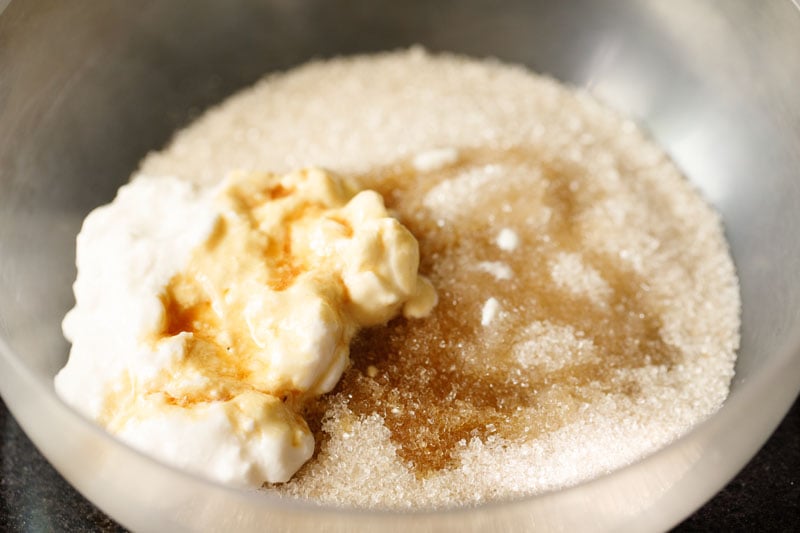
7. Add ½ cup of water.
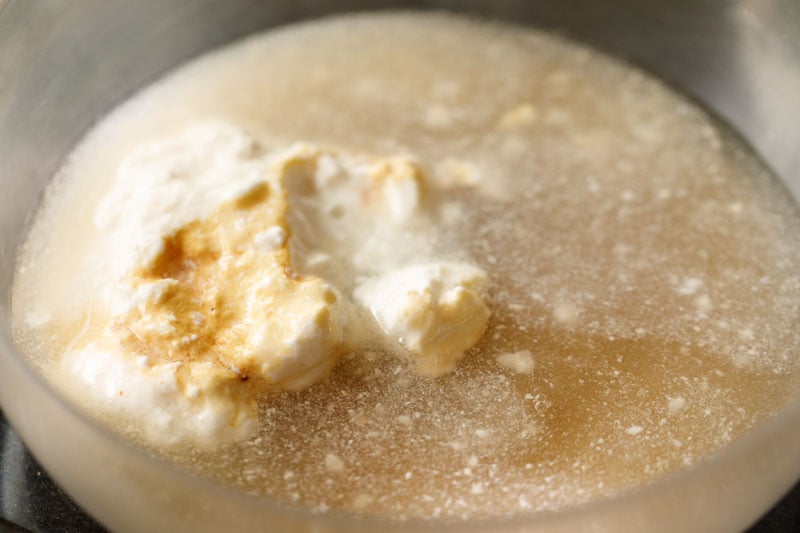
8. Whisk briskly until all of the sugar is dissolved and the curd gets evenly mixed. It should be like buttermilk, slightly off-color and foamy.
It is important that you beat the curd before adding as mentioned above so that you don’t have tiny lumps of curd in this liquid mixture.
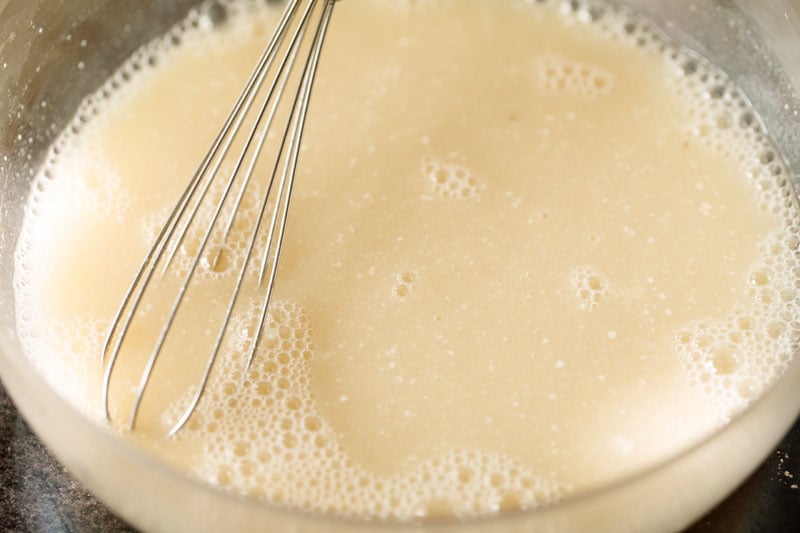
9. Now add ½ teaspoon of baking soda to the wet mixture.
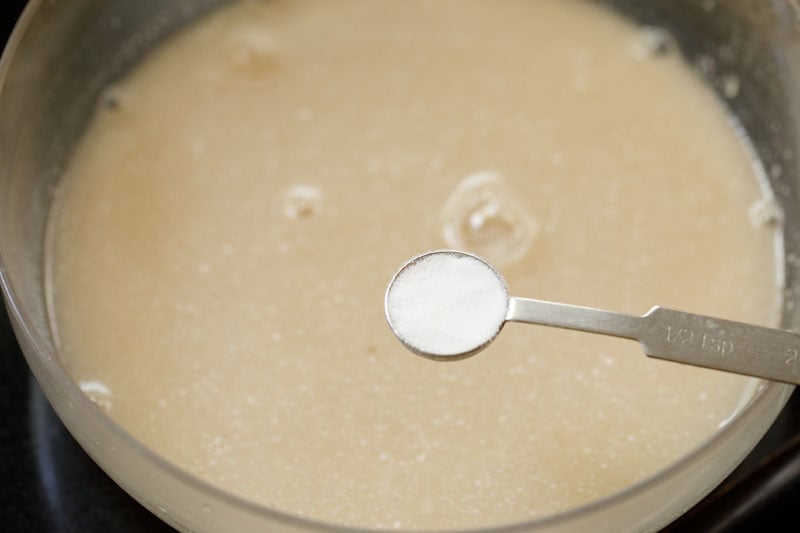
10. Stir until the baking soda is mixed evenly. The baking soda will cause some bubbling in this wet liquid mixture.
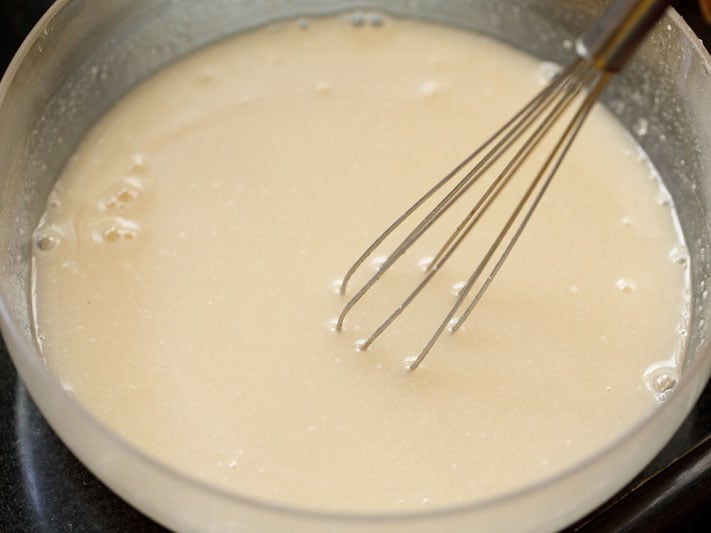
Make Cake Batter
11. Add the liquid mixture and melted butter to the dry sifted ingredients.
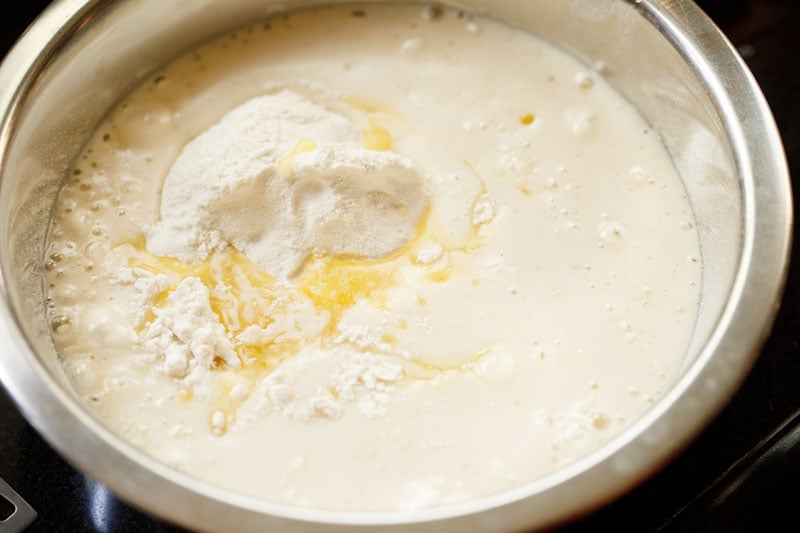
12. Mix very well with a wired whisk. Break apart any lumps by tapping them with the whisk. Be careful not to over-mix the batter.
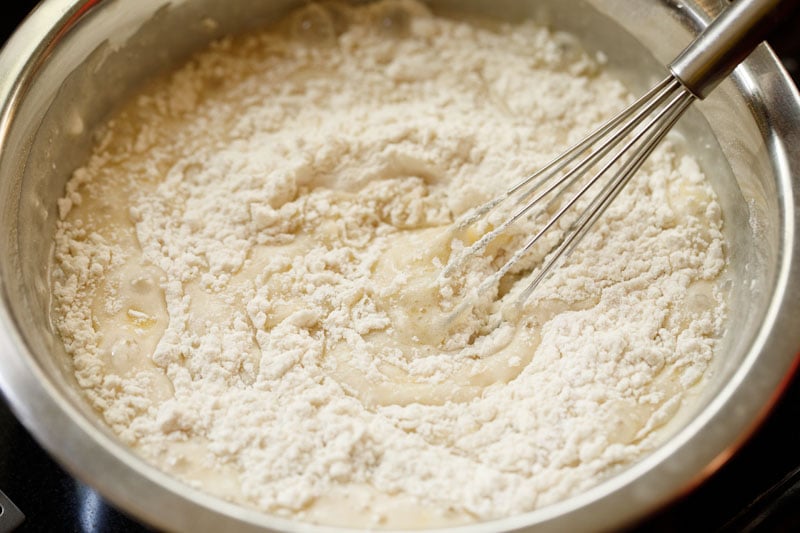
13. It should be a smooth batter like in the photo below.
Tip: If the batter becomes too thick or look dry, add some more milk or water (at room temperature) to get it to the desired consistency. Depending on the flour texture and quality, you will need to add more or less water.
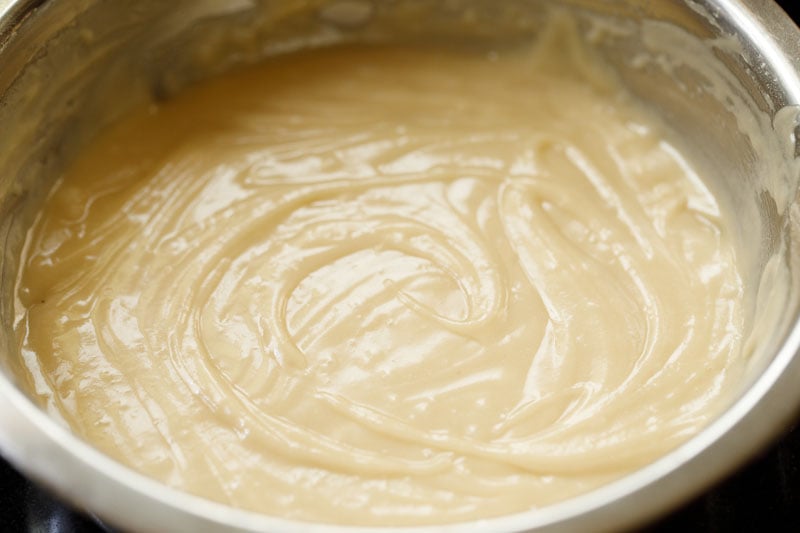
14. Pour the batter into the greased pan. Tap the pan on the countertop a few times so that any extra air bubbles are released and the batter spreads itself evenly in the pan.
You do not need to even the batter with a spatula. The batter spreads on its own.
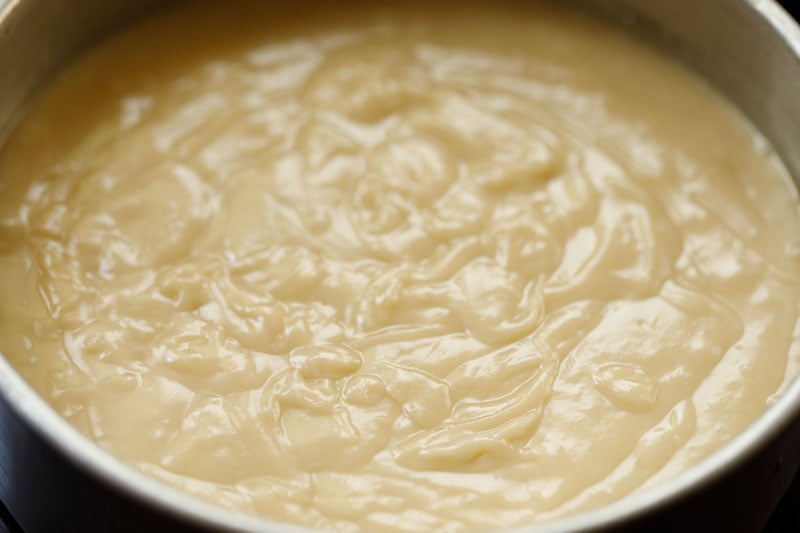
Bake Cake
15. Place the cake pan in the preheated oven on the middle rack. If using an OTG or a regular oven, heat both the top and bottom heating elements.
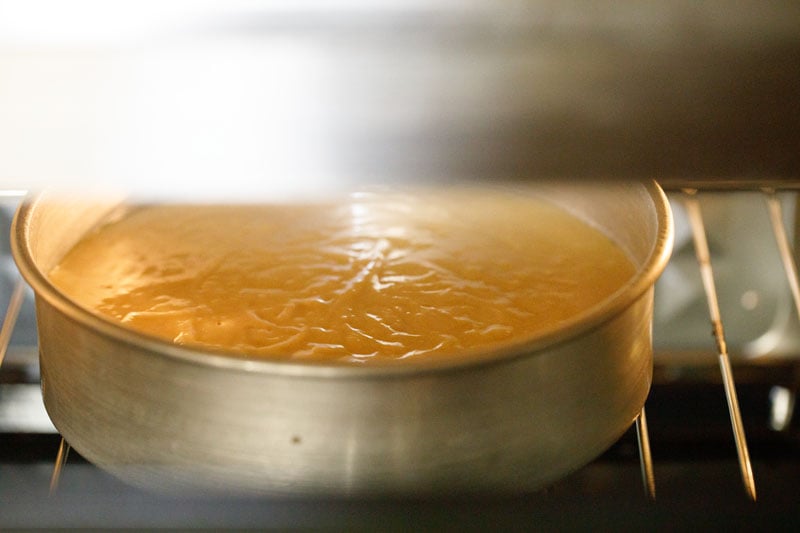
16. Bake at 180 degrees Celsius (375 degrees Fahrenheit) for 30 to 35 minutes, or until the top crust is golden.
Tip 1: The baking time varies with various oven type and the temperatures are not the same. Thus this eggless vanilla cake recipe can take less or more time to bake in your oven. Keep an eye on the cake as it bakes so that it does not brown too much.
Tip 2: Remember not to open the oven door until ¾ of the cake is baked. Opening and closing the oven door many times can make your cake sink or collapse.
Tip 3: When the cake begins to get golden and you see that is browning very quickly, then cover the top with an aluminium foil or butter paper and continue to bake.
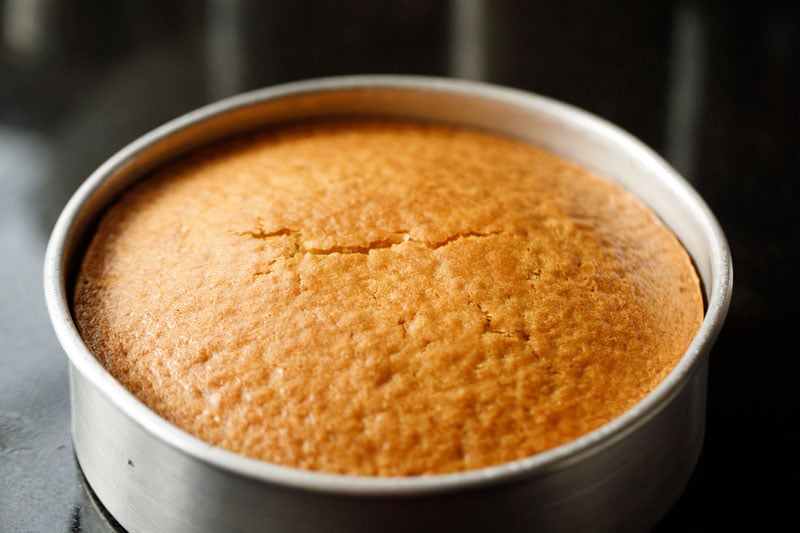
17. Check the doneness of the eggless vanilla cake with a bamboo skewer. It should be clean with no sticky batter on it.
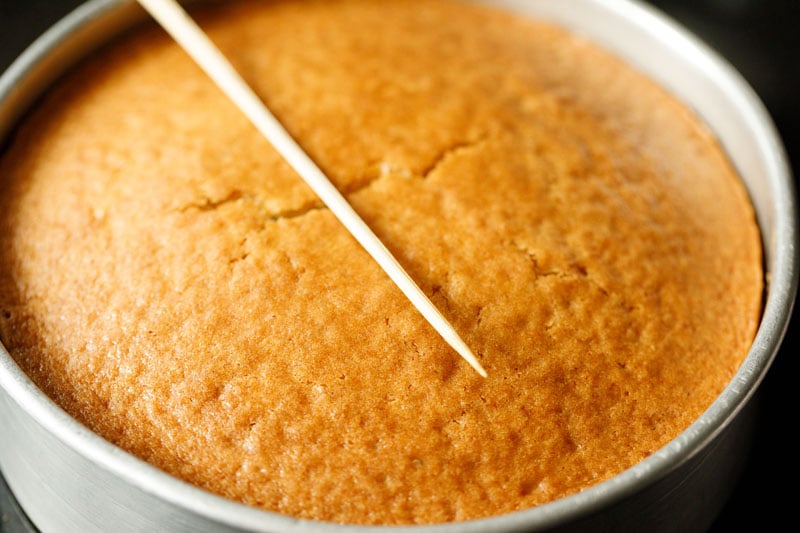
18. Place the pan on a wired tray or rack and let the cake cool to room temperature. Let the cake cool completely before you spread the jam glaze on it.
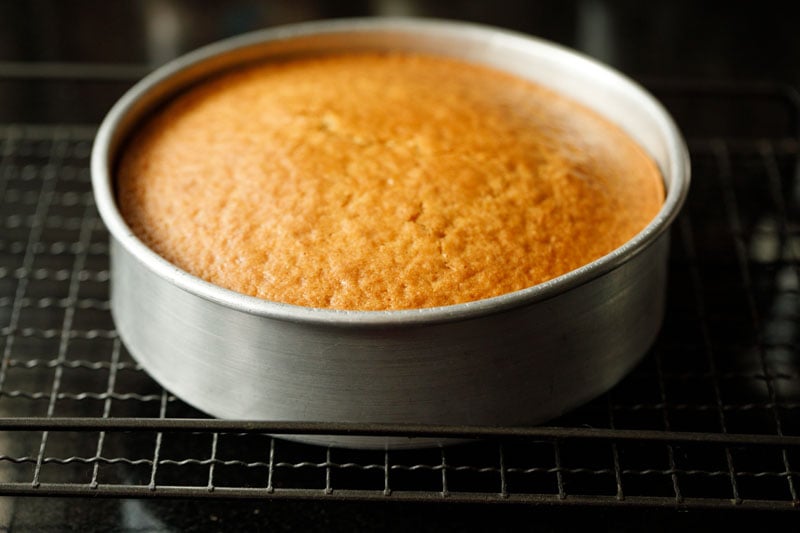
Make Jam Glaze Icing
This eggless vanilla cake is delicious as-is, no toppings needed. However, a fresh fruit jam, buttercream icing or rich chocolate ganache are yummy options to make the cake an extra special sweet treat.
Before you frost the cake, make sure it is cool and not at all hot.
To make an easy jam glaze,
1. First add ½ cup of any sweet fruit jam of your choice in a small skillet or pan. I have used Homemade Strawberry Jam to make this recipe for topping the cake.
2. Now add 1 tablespoon of tapioca starch or arrowroot flour or cornstarch, plus 3 tablespoons of water (or more if needed) and 1 tablespoon butter.
You can use any type of starch-based edible thickener that is available to you. All the three starches that I have listed above thicken the glaze nicely.
So include any one of them for thickening the glaze. In the below photo, the white colored flour is tapioca starch.
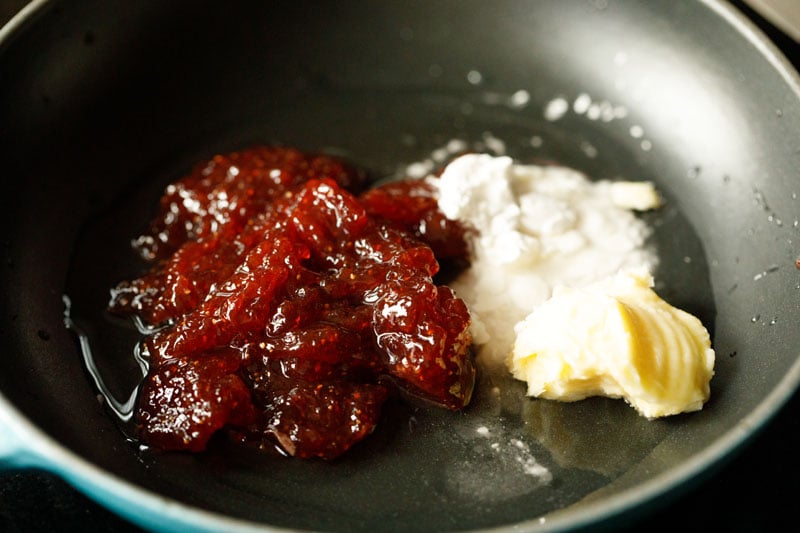
3. Place the pan on low heat and begin to mix.
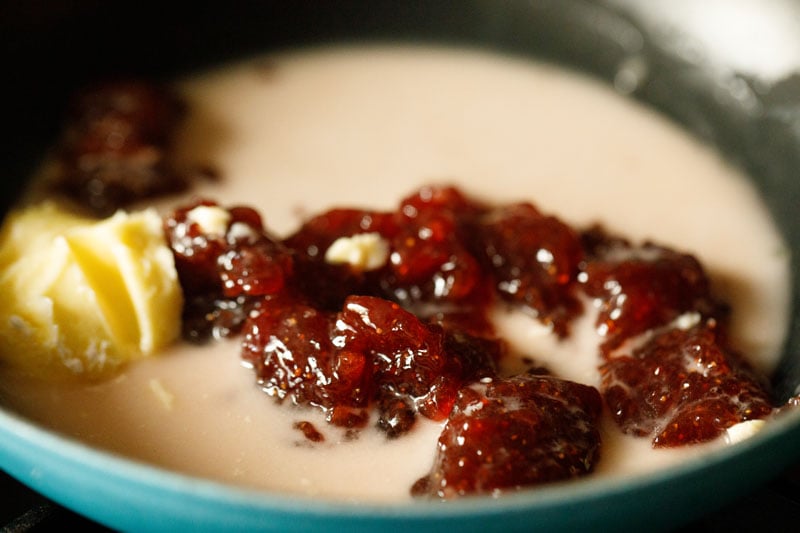
4. Keep stirring until all of the ingredients have melted together and evenly combined.
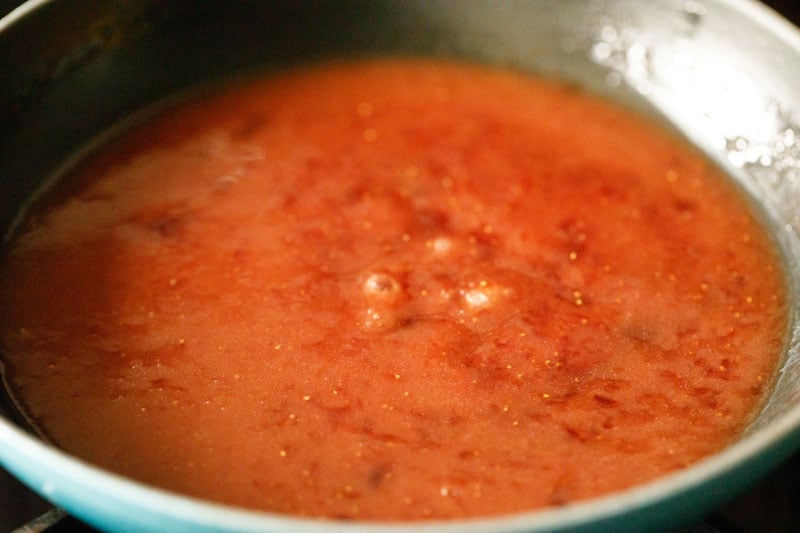
5. Simmer on low heat for 3 to 4 minutes until the glaze thickens, stirring often. Do not boil or cook the mixture down too much.
Set aside and allow the jam glaze to cool slightly, so that it is warm and not hot.
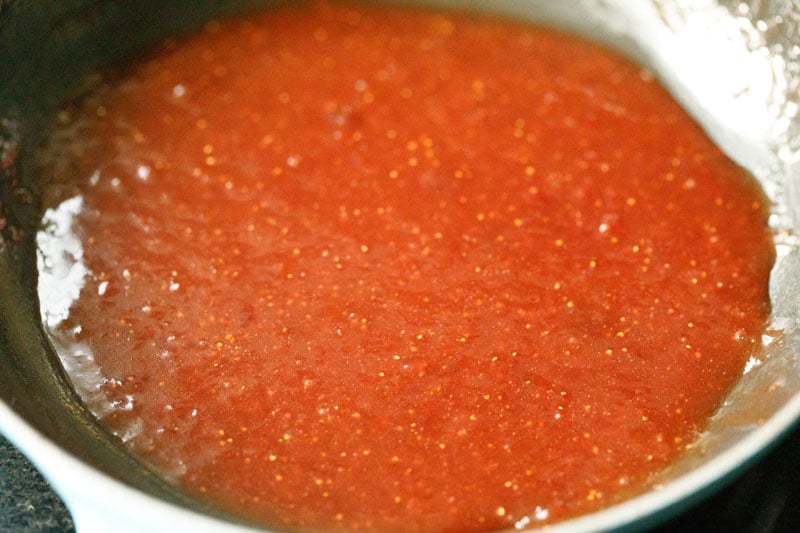
Frost Cake
1. When the eggless vanilla cake cools, remove it gently from the pan. Place it on a board, tray or plate or a cake stand. A rotating cake stand makes applying the glaze easiest.
Place some of the jam icing on top and use a spatula to spread the glaze evenly on top and sides of the cake.
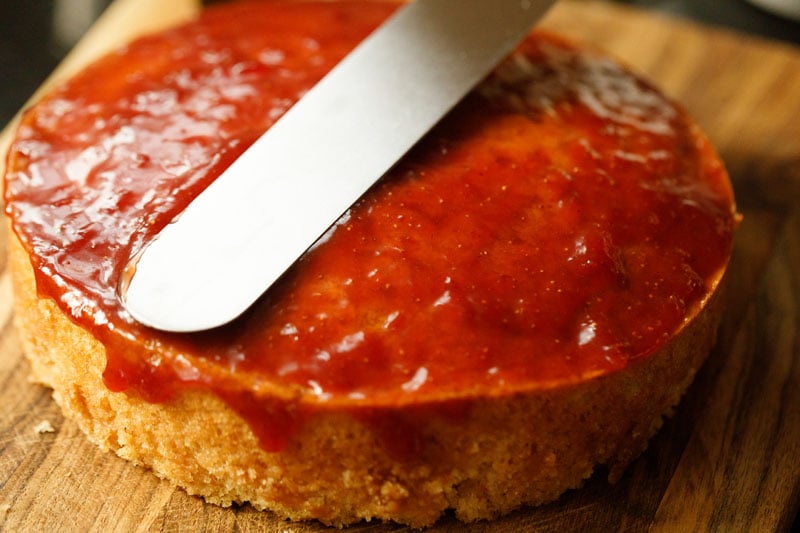
2. Sprinkle some unsweetened desiccated coconut on top. You can even spread it at the sides.
Coconut is optional and you can skip it, if you are not a fan of coconut.
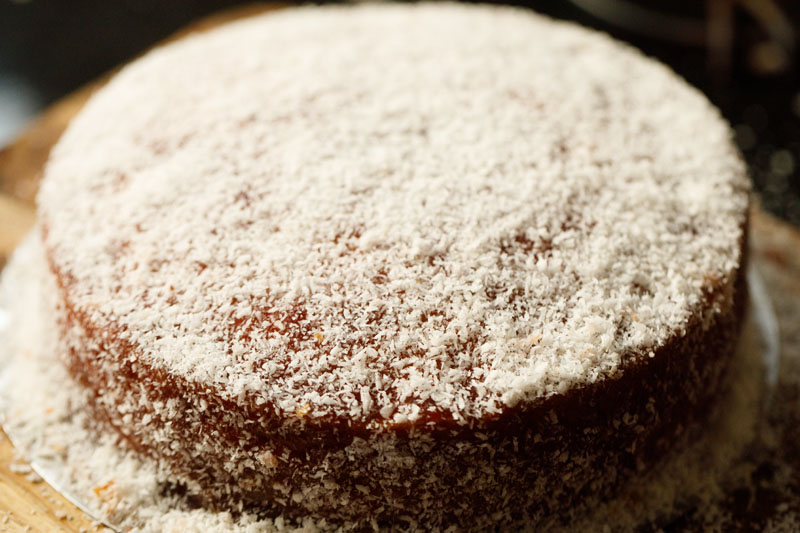
3. Cover with a large steel bowl, taking care that the coconut and icing do not touch the bowl. Let the glaze cool completely and set.
Later slice and serve. You can also keep in the refrigerate for 1 to 2 hours and then serve.
Note that the butter solidifies when cooled in the refrigerator. This make the texture of the cake slightly dense.
So let the cake come to room temperature before serving. Or you can warm it lightly in your oven at 90 degrees celsius (195 degrees Fahrenheit) for some minutes.
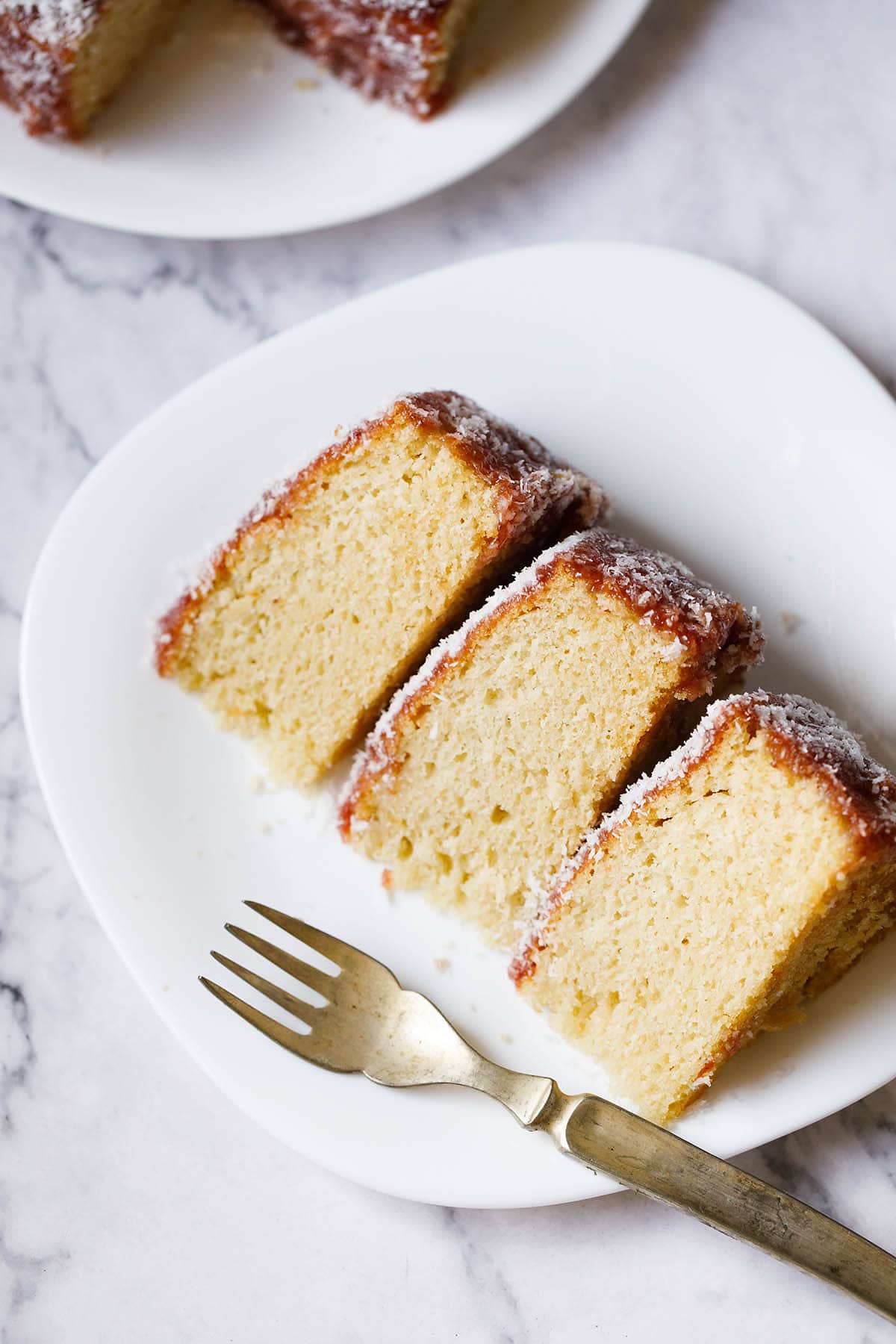
Ingredient Notes & Variations
- Flour: I recommend that you use unbleached and/or organic flour. This recipe works well with both all-purpose flour as well as unbleached pastry flour.
- Butter: You can use a neutral oil in place of butter. For butter, use unsalted butter. In a pinch you can opt for salted butter, but omit adding that pinch of salt in the recipe.
- Jam: Any sweet jam works well for the glaze in this eggless vanilla cake recipe. My favorites are orange jam, mango jam, pineapple jam and of course strawberry jam.
- Vinegar: If you do not have apple cider vinegar, use white vinegar or swap vinegar with lemon juice.
- Sweeteners: To make the eggless vanilla cake less sweet, you can add ½ cup of sugar. In place of sugar, you can also use jaggery, coconut sugar or palm sugar. But the color of the cake will change and become dark. The taste with these sugars will also make the cake taste different.
- Leavening ingredients: My recipe includes both baking powder and baking soda. They are not replaceable with each other. To get the best results, I suggest to follow the proportions mentioned in the recipe. Do make sure that both baking powder and baking soda are fresh and within their shelf-life.
Baking and Storage Tips
- Baking time: The baking time varies with oven types, temperatures inside the oven etc. So it can take less or more time for the cake to bake in your oven. Keep an eye on the cake as it bakes so that it does not brown too much.
- Storage and reheating. Leftovers can be stored in the fridge for up to 4 days, in a sealed container or box. When you refrigerate this cake, the butter in it solidifies and the cake becomes slightly dense. While serving, lightly warm the cake in your oven at 90 degrees celsius (195 degrees Fahrenheit) for some minutes.
My Popular Eggless Cakes Recipes!
Cake Recipes
Cake Recipes
Cake Recipes
Cake Recipes
Please be sure to rate the recipe in the recipe card or leave a comment below if you have made it. For more vegetarian inspirations, Sign Up for my emails or follow me on Instagram, Youtube, Facebook, Pinterest or Twitter.
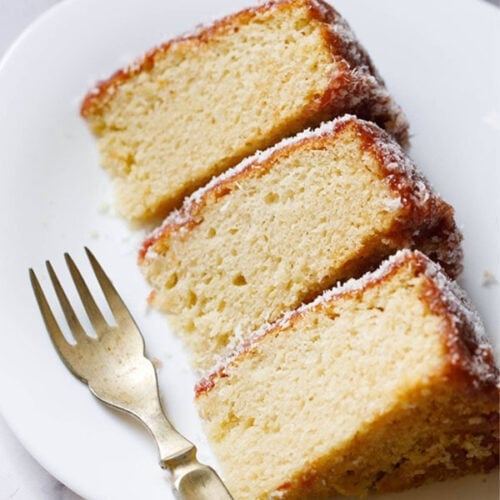
Eggless Vanilla Cake Recipe (Moist & Flavorful Sponge)
Ingredients
Dry ingredients
- 1.5 cups all-purpose flour or pastry flour – 180 grams
- 1 teaspoon baking powder
- 1 pinch salt
Wet ingredients
- ½ cup melted butter – unsalted
- ¼ cup Curd (yogurt) – 62 grams
- ½ cup water
- ¾ cup raw sugar or white sugar – 150 grams
- 1 teaspoon vanilla extract or ½ teaspoon vanilla essence
- 1 tablespoon apple cider vinegar or lemon juice or white vinegar
- ½ teaspoon baking soda
Jam Glaze Icing
- ½ cup strawberry jam or any sweet fruit jam
- 1 tablespoon tapioca starch or arrowroot flour or cornstarch
- 3 tablespoons water or add as required
- 1 tablespoon Butter – unsalted
Instructions
Sifting dry ingredient
- First sift the all-purpose flour with the baking powder and salt in a mixing bowl or pan.
- Keep everything ready as you have to be quick enough to mix the batter.
- Preheat the oven to 180 degrees Celsius (375 degrees Fahrenheit) for 15 to 20 minutes.
- Grease a 7.5 to 8 inches round pan with butter or a neutral tasting oil.
- You can also choose to line the baking pan with parchment and then grease it with oil or butter.
Measuring butter
- Take slightly more than a ½ cup of butter and melt it in a small pan on stovetop or microwave it in a bowl. Simply melt the butter. No need to heat it.
- You need to get about ½ cup of melted butter. So measure the melted butter in a ½ cup measuring cup. Set aside.
Mixing wet ingredients
- In another bowl take sugar, curd (whisked), apple cider vinegar and vanilla extract. Add water.
- First beat the curd separately in a bowl and then add to the other wet ingredients as this helps it to mix evenly without having any tiny lumps.
- Whisk briskly till all of the sugar is dissolved and the curd gets evenly mixed.
- Add the baking soda to this wet liquid mixture
- Stir until the baking soda is mixed evenly. The baking soda will cause some bubbling in this wet liquid mixture.
Making vanilla cake batter
- Add the liquid mixture and melted butter to the dry sifted ingredients.
- Mix very well with a wired whisk. Break apart any lumps by tapping on them with the whisk, but be carefully to not over-mix the batter.
- You should get flowing batter with medium to medium-thick consistency. If the batter looks dry or thick to you, then add some milk or water as needed to thin it.
- Pour the batter in the greased baking pan.
- Tap the pan on the countertop a few times so that extra air bubbles are released. You do not need to even the batter with a spatula. The batter spreads on its own.
Baking eggless vanilla cake
- Place the cake pan in the preheated oven on the middle rack.
- Keep the heating in both the bottom and top elements of the oven on if you are using an OTG or regular oven.
- Bake the cake at 180 degrees Celsius (375 degrees Fahrenheit) for 30 to 35 minutes or until the top crust is golden. Check the doneness of the cake with a bamboo skewer. It should be clean with no sticky batter.
- While baking, If the vanilla cake browns too quickly on the top, then cover the top with an aluminium foil or butter paper.
- Place the pan on a wired tray or rack and let the cake cool to room temperature.
- Once the eggless vanilla cake cools, you can serve it as it is or use the cake to make pastries or gateau.
Making jam glaze icing
- Take ½ cup of any jam of your choice in a small skillet or pan. I have used homemade Strawberry Jam. Add tapioca starch or arrowroot flour or cornstarch, water and butter.
- Place the pan on low heat and begin to mix the glaze ingredients.
- Keep stirring until all of the ingredients have evenly combined.
- Simmer on low heat until the glaze thickens, stirring often. Do not boil or cook the mixture too much. Set aside and allow the jam glaze to cool slightly, so that it is warm and not hot.
Frosting vanilla cake
- When the eggless vanilla cake cools, remove it gently from the pan.
- Place it on a board, tray or plate or a cake stand.
- Place some of the jam icing on top and use a spatula to spread the glaze evenly on top and sides of the cake.
- Sprinkle some unsweetened desiccated coconut on top. You can even spread it at the sides. Omit coconut, if you are not a fan of it.
- Cover with a large steel bowl, taking care that the coconut and jam icing do not touch the bowl. Let the glaze cool completely and set. Later slice and serve. You can also keep in the refrigerate for 1 to 2 hours and then serve.
- Note that the butter solidifies when cooled in the refrigerator. This make the texture of the cake slightly dense. So let the cake come to room temperature before serving. Or you can warm it lightly in your oven at 90 degrees celsius (195 degrees Fahrenheit) for some minutes.
Video
Notes
Ingredient Notes
- Flour: I recommend that you use unbleached and/or organic flour. This recipe works well with both all-purpose flour as well as unbleached pastry flour.
- Butter: Use a neutral oil in place of butter. For butter, use unsalted butter. In a pinch you can opt for salted butter, but omit adding that one pinch of salt in the recipe.
- Jam: Any sweet jam works well for the glaze. My favorites are orange jam, mango jam, pineapple jam and of course strawberry jam.
- Vinegar: If you do not have apple cider vinegar, use white vinegar or swap vinegar with lemon juice.
- Leavening ingredients: My recipe includes both baking powder and baking soda. They are not replaceable with each other. To get the best results, use the proportions mentioned in the recipe and make sure that they are fresh and within their shelf-life.
- Sweetness: To make the vanilla cake less sweet, you can add ½ cup of sugar. You can also use jaggery, coconut sugar or palm sugar.
Baking and Storage Notes
- Storage and reheating. Leftovers can be stored in the fridge for up to 4 days in a sealed container. When you refrigerate this cake, the butter in it solidifies and the cake becomes slightly dense. While serving, lightly warm the cake in your oven at 90 degrees celsius (195 degrees Fahrenheit) for some minutes.
- Baking time: The baking time varies with oven types, temperatures inside the oven etc. So it can take less or more time for the cake to bake in your oven. Keep an eye on the cake as it bakes so that it does not brown too much.
Nutrition Info (Approximate Values)
This Eggless Vanilla Cake recipe from the blog archives was first published on November 2013. It has been updated and republished on January 2022.
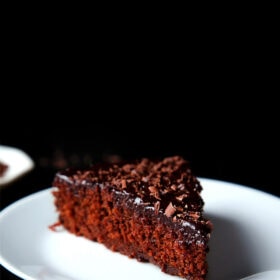
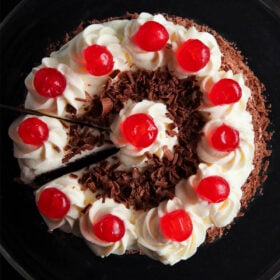
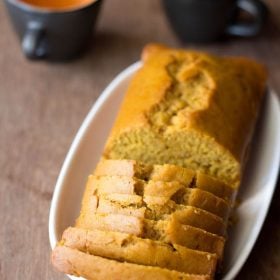
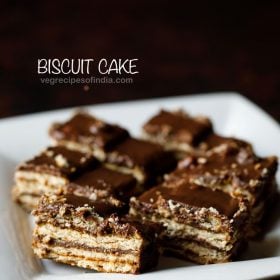
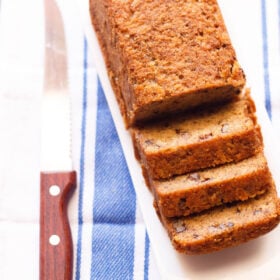
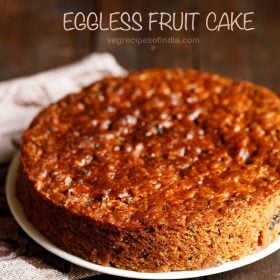








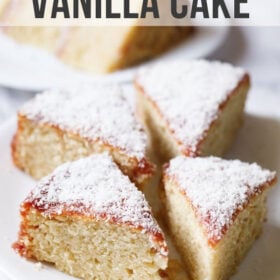
i like your recipe , it was very useful
i will definately make or to ask my mum to make it for me on my birthday i. e. on 2nd april
😛
thankyou keshav 🙂 surely try the cake on your birthday do let us know how your mom reacted?
Can I add salted butter the amul one in this recipe? .
yes you can use salted butter. but then skip adding the pinch of salt mentioned in the ingredient list.
can we bake this cake in a microvave???
not in microwave mode. if you have the convection mode in your microwave oven, then only the cake can be baked in the convection mode.
Hi I tried this recipe it turned out perfect spongy and soft… But after frosting and keeping in refrigerator… It got little hard and taste too much floury… What could went wrong? Can you guide?
did the frosting got hard or the cake got hard? cake should not get hard. it will become faintly dense due to being refrigerated but won’t become hard, if after baking it was perfectly spongy and soft.
Hi Dasanna,
Whenever i try to make a fruit cake like christmas cake the fruits got settled in the bottom and the cake becomes rubbery at that fruits part…even i mixed some flour with fruit chunks and added to the fruits it got settled in the bottom…i tried some strawberry cake with this basic vannila cake…but the strawberry got settled in the bottom and the cake becomes rubbery…can u pls tell what could be the reason…
Thanks in advance…
abi always add fruit or dry fruits towards the last process of mixing cake batter. also the batter has to be of medium consistency and not too thin else the fruit will sink to the bottom. hope this help’s you.
Thanks for ur quick and kindly reply…?
wat to do if strawberry jam not available to make the glaze.can mixed fruit jam or apple jelly be used using same recipe.
you can use any fruit jam. even mixed fruit jam or apple jelly can be used.
Tried this today and came out well. It’s so soft and moist. Thanks for the recipe.
thank you reshma for this positive review of the recipe.
i want to decorate my cake to.hellp me
how you plan to decorate the cake?
Hello.. M hema .. I tried this recipe in a halogen oven. E1 though I cooked it for more than 50mins .. d cake was undercooked.. it was soggy at d centre and burnt at d top. For the first 40mins I covered the cake tin with aluminium foil, as the top was not cooked I removed the foil and baked again for 10 mins..d toothpick came out clean.. but d cake was little soggy at centre and sides. Please, advice me.
hema, i have no idea how a halogen oven works. looks like a lot of heat is coming from the top and as a result the cake got burnt from top and less heat is coming from the base. this is the reason why the cake has not baked well in the center. what i would suggest is whenever you bake cakes in this oven, right before baking cover the pan with a aluminium foil. once the cake has baked well, then remove the foil and brown the top for a few minutes.
hi hema, i am akhila here, i also hv a halogen oven. i hv also tried d same it came out well. instead of maida i used wheat flour and at 180 deg i kept for 13-14 min. it came out very well.
thanks for the info akhila.
Thanks for sharing this cake receipe. The cake prepared came out well. But only problem came was, it’s taste became little bit bitter. Can you please tell me why this happened.
hi asha, bitterness can either be due to butter, which has almost gone rancid or curd which is on the verge of getting spoiled. otherwise there is no reason why the cake should be bitter. always for any baking good, fresh ingredients or ingredients which are in their shelf life should be used.
or could it be the soda? because when I use baking soda, there is a faint wierd, bitter after taste
Or could this be just a coincidence?
baking soda has an after taste. but just 1/2 tsp should not make the cake bitter. difficult to say unless you use the same baking soda in some other recipe and you get a bitter taste. then its the baking soda that is the culprit 🙂
Hi… Am keeping on trying Ur recipes … I hv tried doing this cake…. but my butter and sugar mixture is became hard as soon I combined each other, so what I have to do to avoid this…
could be due to the size of sugar granules or quality. did you melt the butter. the butter should be warm or slightly hot when you add sugar, so that the sugar dissolves. if the consistency still persists, then add 1/4 cup more of melted butter.
I actually melted the butter, as soon as the butter melted I mixed it with tge sugar powder( normal sugar which I made in to powder ) but it solidifies quickly
fine. then its due to the sugar powder. but i hope the texture of the cake turned out good.
actually this is my first cake in my life and it came out very well… the texture and taste is perfect… but my sugar spoiled my preparation thats it.. else it was perfect.. thank you so much
fine. nice to know that in spite of the sugar issue the cake turned out well in terms of taste and texture 🙂
Hey Dasanna, It’s a very nice recipe, but just some doubts, is it necessary to use vinegar or lime juice, if yes what effect will it have. I am concerned as we are using milk and yogurt as well.
And can we use cocoa powder and brown sugar as well.
divya the milk might curdle but that’s fine it won’t impact the cake while it’s baking. hope this help’s you yes you could add cocoa powder and brown sugar.
My cake was kachcha from within, though the toothpick did come out clean. I believe the other people who also faced a similar issue were stuck at the folding / mixing stage, just the way I was. Can you insert a video of folding this cake. I had understood the samosa cover recipe because you have a video for that.
the cake was not kachcha. when the toothpick comes out clean, the cake is done. the kachcha texture is the doughy texture in the cake. looks kachcha but actually not kachcha. its cooked but doughy and firm, like a pudding or bread. i will update the post with a youtube link which shows how folding is done. thanks for the suggestion payal.
Hey thanks so much 🙂
welcome payal 🙂
Recipe is good
thankyou amita 🙂
Hi dassana …..I have tried a quite a few recipes from your site n found all of them very very tasty n fulfilling…..wonderful job n I am your greatest admirer ….
thankyou padma for your honest words we are pleased to know this. god bless you.